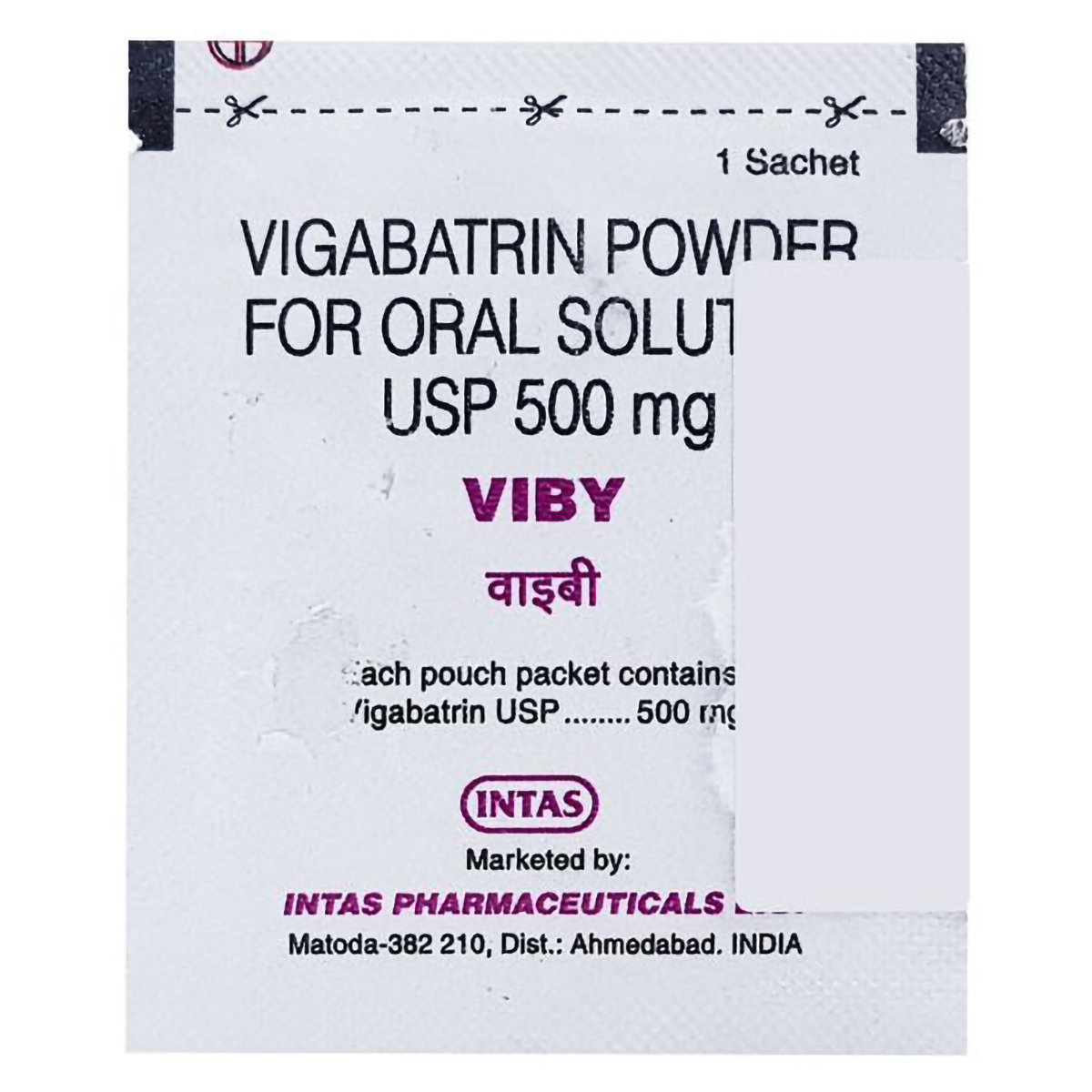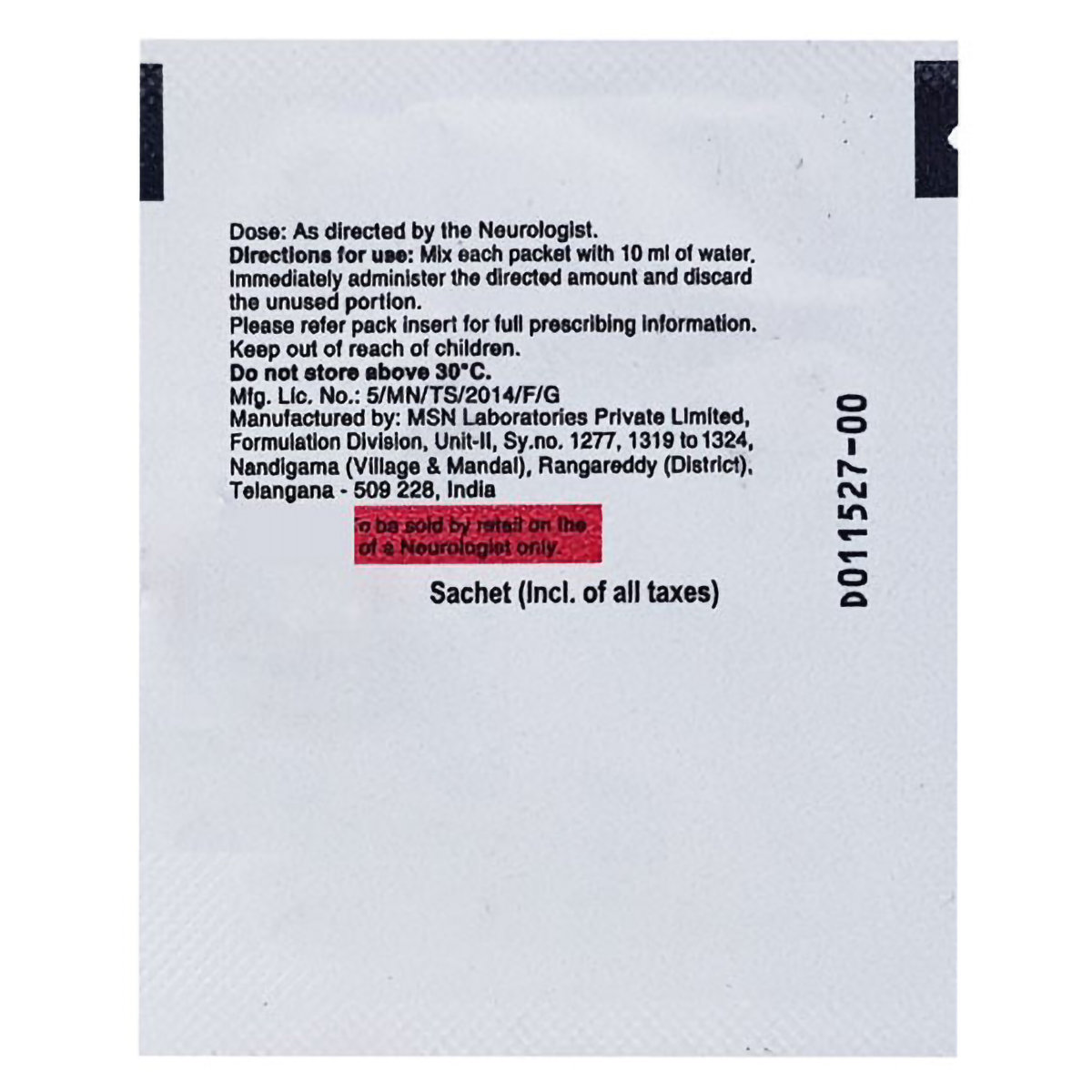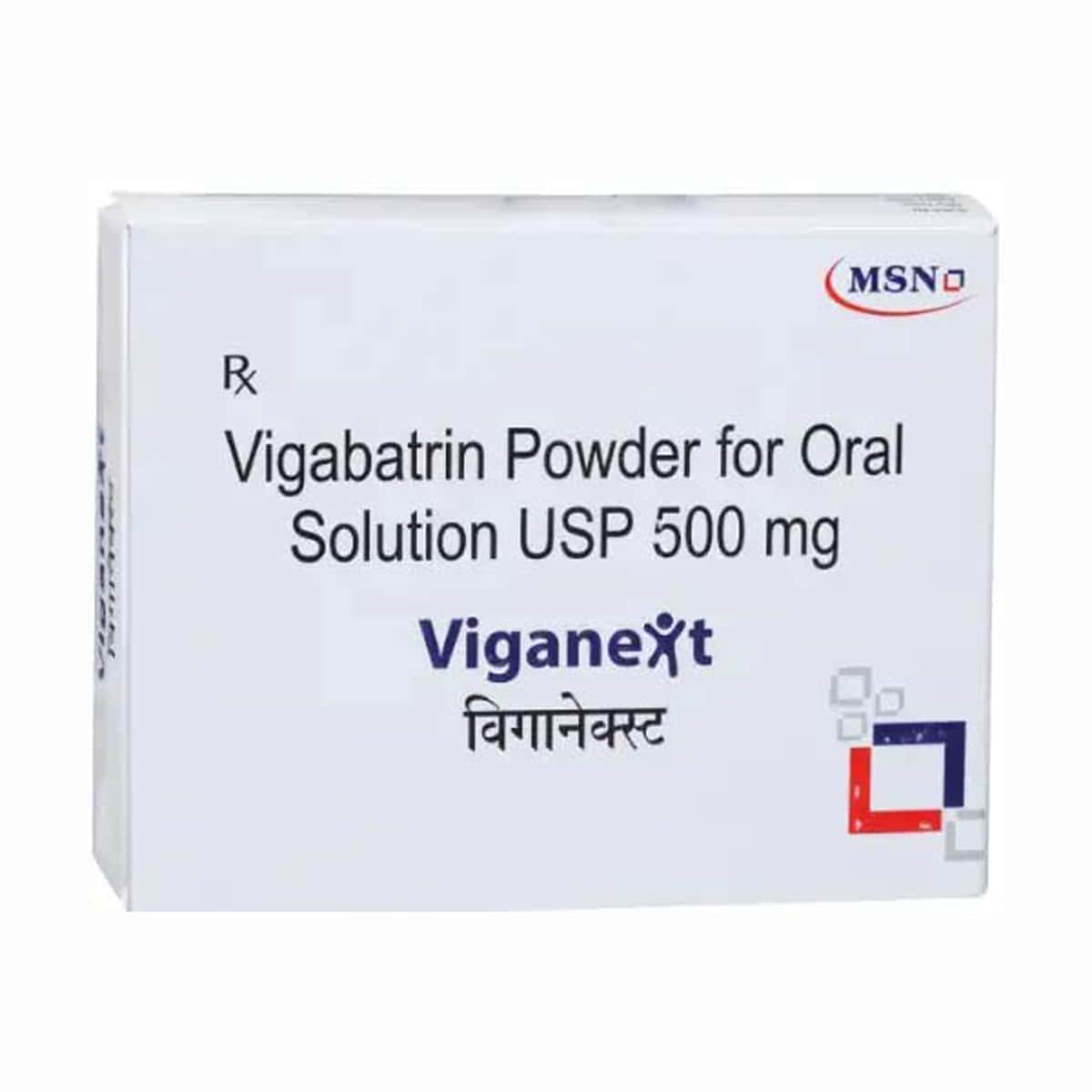Viby Powder For Oral Solution


MRP ₹67.5
(Inclusive of all Taxes)
₹10.1 Cashback (15%)
know your delivery time
Provide Delivery Location
Composition :
Manufacturer/Marketer :
Consume Type :
Expires on or after :
Return Policy :

Secure Payment

Trusted by 8 Crore Indians

Genuine Products
Therapeutic Class
Country of origin
Manufacturer/Marketer address
Author Details
We provide you with authentic, trustworthy and relevant information
Disclaimer
Alcohol
Safe if prescribed
It is unsafe to consume alcohol while taking Viby Powder For Oral Solution since it may worsen the side effects.
Pregnancy
Consult your doctor
There are no adequate and well-controlled studies on pregnant women. Inform your doctor before receiving the Viby Powder For Oral Solution if you are pregnant or planning to become pregnant. Your doctor will prescribe only if the benefits outweigh the risks.
Breast Feeding
Consult your doctor
There has been no significant research on using Viby Powder For Oral Solution in breastfeeding/nursing moms. So, let your doctor know if you are a nursing mother before taking Viby Powder For Oral Solution; your doctor will decide whether breastfeeding mothers can take Viby Powder For Oral Solution.
Driving
Safe if prescribed
Viby Powder For Oral Solution may cause colour blindness or blurred vision; therefore, do not drive or operate machinery.
Liver
Consult your doctor
If you have liver problems, inform your doctor before taking Viby Powder For Oral Solution. Your doctor will weigh the benefits and potential risks before prescribing Viby Powder For Oral Solution.
Kidney
Consult your doctor
If you have kidney problems, inform your doctor before taking Viby Powder For Oral Solution. Your doctor will weigh the benefits and potential risks before prescribing Viby Powder For Oral Solution.
Children
Safe if prescribed
Please consult your doctor. Your doctor will weigh the benefits and risks before prescribing this medicine for your child.
Product Substitutes
Reference
- https://medlineplus.gov/druginfo/meds/a610016.html
- https://www.sabril.net/
- https://www.epilepsy.com/tools-resources/seizure-medication-list/vigabatrin
- https://www.ncbi.nlm.nih.gov/books/NBK557579/#:~:text=Vigabatrin%20is%20an%20irreversible%20inhibitor,free%20in%20the%20synaptic%20cleft.
- https://www.drugs.com/drug-interactions/vigabatrin-index.html?filter=3
About Viby Powder For Oral Solution
Viby Powder For Oral Solution belongs to a group of medications called anticonvulsants. Vigabatrin is used alone or with other medicines to treat refractory complex partial seizures in adults and children two years of age and older and infantile spasms in children. Seizures are considered refractory when two or more AEDs (anti-epileptic drugs) have failed to control the seizures. Infantile spasms, sometimes called West syndrome, are a type of seizure that occurs in babies.
Viby Powder For Oral Solution contains Vigabatrin. It increases the amount of the chemical called gamma-aminobutyric acid (GABA) in the brain. Low levels of GABA cause some seizures. When Vigabatrin increases GABA, it reduces the likelihood of a seizure.
Take Viby Powder For Oral Solution as prescribed by your doctor. Depending on your medical condition, you are advised to take Viby Powder For Oral Solution for as long as your doctor prescribes it. In some cases, Viby Powder For Oral Solution may cause side effects such as blue-yellow colour blindness, blurred vision, decreased vision or other vision changes, eye pain, increased seizures and loss of memory or problems with memory. Most of these side effects do not require medical attention and will resolve gradually. However, you are advised to talk to your doctor if you experience these side effects persistently.
Before taking the Viby Powder For Oral Solution, let your doctor know about all your medical conditions, sensitivities, and all medications you are using. Inform your doctor if you are pregnant or planning to become pregnant. You should not breastfeed unless the doctor advises. To treat your condition effectually, continue taking Viby Powder For Oral Solution for as long as your doctor has prescribed. Viby Powder For Oral Solution should be gradually withdrawn, so please do not stop taking Viby Powder For Oral Solution without consulting your doctor. Consult your doctor immediately if you experience suicidal tendencies. Driving or operating machinery is not advised since Viby Powder For Oral Solution may cause vision problems. It is not recommended to consume alcoholic beverages while receiving vigabatrin medication.
Uses of Viby Powder For Oral Solution
Medicinal Benefits Mweb
Key Benefits
Viby Powder For Oral Solution contains Vigabatrin. Vigabatrin is an anticonvulsant. It increases the amount of the chemical called gamma-aminobutyric acid (GABA) in the brain. Low levels of GABA cause some seizures. When Vigabatrin increases GABA, it reduces the likelihood of a seizure. Vigabatrin is used alone or together with other medicines to treat refractory complex partial seizures in adults and children two years of age and older and infantile spasms in children. It is used in patients who have already been treated with other medicines that did not work well.
Directions for Use
Side Effects of Viby Powder For Oral Solution
- Blue-yellow colour blindness
- Blurred vision
- Decreased vision or other vision changes
- Eye pain
- Increase in seizures
- Loss of memory or problems with memory
Drug Warnings
Before taking the Viby Powder For Oral Solution, let your doctor know about all your medical conditions, sensitivities, and all medications you are using. And also, inform your doctor if you are pregnant, planning to become pregnant, or breastfeeding. The presence of other medical problems may affect the use of this medicine. Make sure you tell your doctor if you have any other medical problems, especially Anemia, Eye or vision problems, Depression, Mental illness and Kidney disease.
Drug-Drug Interactions
Drug-Drug Interactions
Login/Sign Up
Co-administration of Methylprednisolone and Viby Powder For Oral Solution together can increase the risk or severity of side effects associated with vision loss.
How to manage the interaction:
Taking Methylprednisolone with Viby Powder For Oral Solution is not recommended, it can be taken if prescribed by the doctor. Regular eye check ups are advised during this treatment. Do not discontinue any medication without consulting a doctor.
Taking Tamoxifen with Viby Powder For Oral Solution may increase the risk of side effects associated with vision loss.
How to manage the interaction:
Although taking tamoxifen and Viby Powder For Oral Solution together can possibly result in an interaction, it can be taken if a doctor has prescribed it. In case you experience any unusual symptoms, consult a doctor. Routine eye testing is advised during this treatment. Do not stop using any medications without consulting a doctor.
When Viby Powder For Oral Solution is taken along with Ketamine, it increases the risk or severity of side effects.
How to manage the interaction:
There may be a possibility of interaction between Viby Powder For Oral Solution and ketamine, but it can be taken if prescribed by a doctor. However, if you experience dizziness, drowsiness, confusion, difficulty concentrating, and breathing difficulty, impairment in thinking, judgment, and motor coordination, consult the doctor. Do not discontinue the medications without consulting a doctor.
Co-administration of Viby Powder For Oral Solution with Cortisone may increase the risk of serious side effects associated with vision loss, especially if used together for prolonged periods.
How to manage the interaction:
Although taking Viby Powder For Oral Solution and Cortisone together can cause an interaction, it can be taken if a doctor has suggested it. Routine vision testing is advised during treatment with Viby Powder For Oral Solution. Do not discontinue any medications without a doctor's advice.
Co-administration of Viby Powder For Oral Solution with Betamethasone may increase the risk of serious side effects associated with vision loss, especially if used together for prolonged periods.
How to manage the interaction:
Although there is an interaction, betamethasone can be taken with Viby Powder For Oral Solution if prescribed by the doctor. Routine vision testing is advised during treatment with Viby Powder For Oral Solution. Do not discontinue any medications without a doctor's advice.
Using Viby Powder For Oral Solution together with Triamcinolone, especially for prolonged periods, may increase the risk of serious side effects associated with vision loss.
How to manage the interaction:
Although there is an interaction between triamcinolone and Viby Powder For Oral Solution, they can be taken together if prescribed by a doctor. Do not discontinue any medications without consulting a doctor.
Co-administration of Viby Powder For Oral Solution with Oxyquinoline (topical- applied on to the skin surface) may increase the risk of serious side effects associated with vision loss, especially if used together for prolonged periods.
How to manage the interaction:
Although taking Oxyquinoline and Viby Powder For Oral Solution together can cause an interaction, it can be taken if your doctor has suggested it. Routine vision testing is advised during treatment with Viby Powder For Oral Solution. Do not discontinue any medications without a doctor's advice.
Taking Viby Powder For Oral Solution together with Sodium oxybate may increase the risk of side effects.
How to manage the interaction:
There may be a possibility of interaction between Viby Powder For Oral Solution and Sodium oxybate, but it can be taken if prescribed by a doctor. However, if you experience drowsiness, lightheadedness, disorientation, slow or shallow breathing, and difficulties with thinking, judgment, and motor coordination, consult the doctor. Do not discontinue the medications without consulting a doctor.
Taking Viby Powder For Oral Solution with Esketamine can increase the likelihood and seriousness of side effects.
How to manage the interaction:
There may be a possibility of interaction between Viby Powder For Oral Solution and Esketamine, but it can be taken if prescribed by a doctor. However, if you experience tiredness, disorientation, difficulty focusing, and slowed thinking, judgment, reaction speed, and motor coordination, Consult the doctor. Avoid driving or operating dangerous machinery. Do not discontinue the medications without consulting a doctor.
Co-administration of Viby Powder For Oral Solution with Trimethadione may increase the risk of serious side effects associated with vision loss, especially if used together for prolonged periods.
How to manage the interaction:
Although there is a possible interaction between Trimethadione and Viby Powder For Oral Solution, you can take these medicines together if prescribed by a doctor. Routine vision testing is advised during treatment with Viby Powder For Oral Solution. Do not discontinue any medications without a doctor's advice.
Drug-Food Interactions
Drug-Food Interactions
Login/Sign Up
Drug-Diseases Interactions
Drug-Diseases Interactions
Login/Sign Up
Drug-Drug Interactions Checker List
- TRIMETHADIONE
- AMIODARONE
- BETAMETHASONE
- BUDESONIDE
- ETHAMBUTOL
Habit Forming
Special Advise
- Regular vision tests are recommended.
- Pay close attention to any changes in mood, behaviour, thoughts, or feelings, especially if they are sudden.
- Maintain all scheduled follow-up appointments with your healthcare practitioner.
Diet & Lifestyle Advise
- A ketogenic diet (low in carbohydrates and high in fats) is recommended for children with epilepsy. This diet helps utilise fat instead of glucose for energy generation.
- The Atkins diet (high fat and controlled carbohydrates) is recommended for adolescents and adults.
- Exercising regularly helps in maintaining weight and improving overall health.
- Rest well, and get plenty of sleep.
- Avoid smoking and alcohol consumption.
- Meditation and yoga can help lower stress, decrease pain sensitivity and improves coping skills.
- Have a seizure response plan, and help those around you know what to do.
- Prepare your living area; small changes may reduce the risk of physical injury during a seizure.
- Understand what triggers seizures are and try reducing or avoiding them.
- Please pay attention to overall health, as it can help reduce seizure activity.
- Install an alarm or emergency device to get assistance during a seizure attack.
All Substitutes & Brand Comparisons
RX
Viganext Powder For Solution 1's
Msn Laboratories Pvt Ltd
₹67.5
(₹60.8 per unit)

Have a query?
Buy best C.n.s Drugs products by
Intas Pharmaceuticals Ltd
Sun Pharmaceutical Industries Ltd
Torrent Pharmaceuticals Ltd
Alkem Laboratories Ltd
Abbott India Ltd
Cipla Ltd
Alteus Biogenics Pvt Ltd
Micro Labs Ltd
Lupin Ltd
Ipca Laboratories Ltd
D D Pharmaceuticals Pvt Ltd
Icon Life Sciences
Mankind Pharma Pvt Ltd
Tripada Healthcare Pvt Ltd
Arinna Lifesciences Ltd
Linux Laboratories Pvt Ltd
East West Pharma India Pvt Ltd
La Renon Healthcare Pvt Ltd
Talent India Pvt Ltd
Tas Med India Pvt Ltd
Zydus Healthcare Ltd
Cnx Health Care Pvt Ltd
Eris Life Sciences Ltd
Leeford Healthcare Ltd
Emcure Pharmaceuticals Ltd
Macleods Pharmaceuticals Ltd
Sigmund Promedica
Aristo Pharmaceuticals Pvt Ltd
Dr Reddy's Laboratories Ltd
Troikaa Pharmaceuticals Ltd
Consern Pharma Ltd
Zydus Cadila
Shine Pharmaceuticals Ltd
Wockhardt Ltd
Ardent Life Sciences Pvt Ltd
Crescent Formulations Pvt Ltd
Theo Pharma Pvt Ltd
Reliance Formulation Pvt Ltd
Ikon Pharmaceuticals Pvt Ltd
Propel Healthcare
Neon Laboratories Ltd
Jagsam Pharma
Msn Laboratories Pvt Ltd
Morepen Laboratories Ltd
Pulse Pharmaceuticals
Sanofi India Ltd
Med Manor Organics Pvt Ltd
Hetero Healthcare Pvt Ltd
Novartis India Ltd
Crescent Therapeutics Ltd
Elder Pharmaceuticals Ltd
Solvate Laboratories Pvt Ltd
Akumentis Healthcare Ltd
Mova Pharmaceutical Pvt Ltd
Psyco Remedies Ltd
Tripada Lifecare Pvt Ltd
Ajanta Pharma Ltd
Cyrus Remedies Pvt Ltd
Medishri Healthcare Pvt Ltd
Cadila Healthcare Ltd
Glenmark Pharmaceuticals Ltd
Matteo Health Care Pvt Ltd
Hbc Life Sciences Pvt Ltd
Lyf Healthcare
Matias Healthcare Pvt Ltd
Mesmer Pharmaceuticals
Alembic Pharmaceuticals Ltd
Capital Pharma
Crescent Pharmaceuticals
Medopharm Pvt Ltd
Alniche Life Sciences Pvt Ltd
Kivi Labs Ltd
Talin Remedies Pvt Ltd
USV Pvt Ltd
Quince Lifesciences Pvt Ltd
Solis Pharmaceuticals
Infivis Life Care
Zuventus Healthcare Ltd
Cadila Pharmaceuticals Ltd
Pfizer Ltd
Wallace Pharmaceuticals Pvt Ltd
A N Pharmacia Laboratories Pvt Ltd
Blue Cross Laboratories Pvt Ltd
Jenburkt Pharmaceuticals Ltd
Lia Life Sciences Pvt Ltd
Mano Pharma
Medley Pharmaceuticals Ltd
Primus Remedies Pvt Ltd
FDC Ltd
Maneesh Pharmaceuticals Ltd
Apex Laboratories Pvt Ltd
Gagnant Healthcare Pvt Ltd
Ozone Pharmaceuticals Ltd
RPG Life Sciences Ltd
Strides Shasun Ltd
Unichem International
GlaxoSmithKline Pharmaceuticals Ltd
Kuresys Labs Pvt Ltd
LA Pharma
Trion Pharma India Llp




